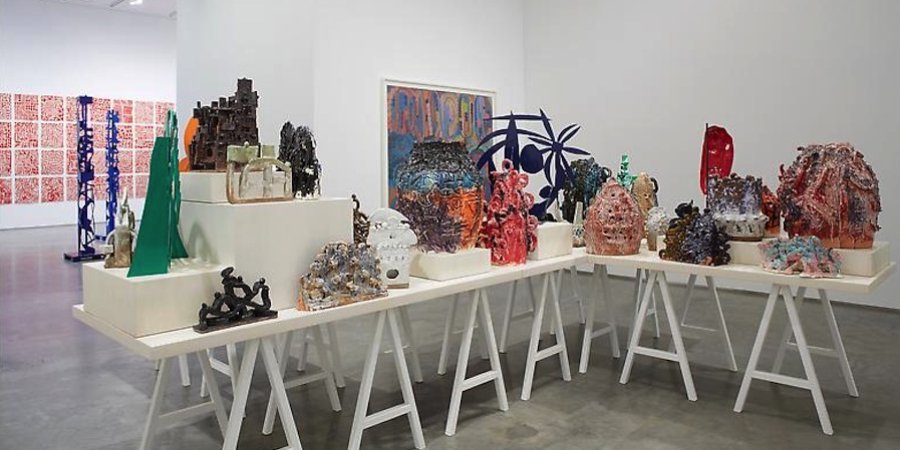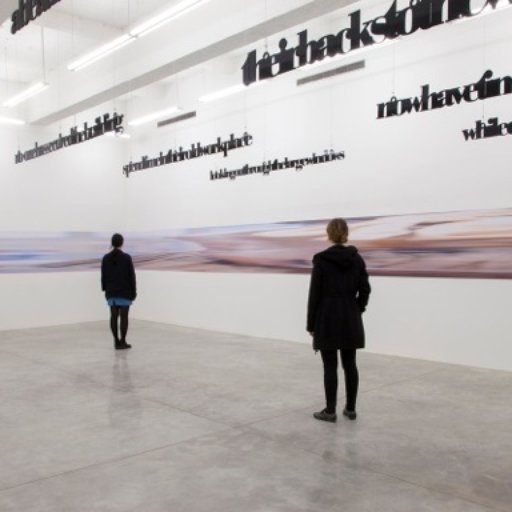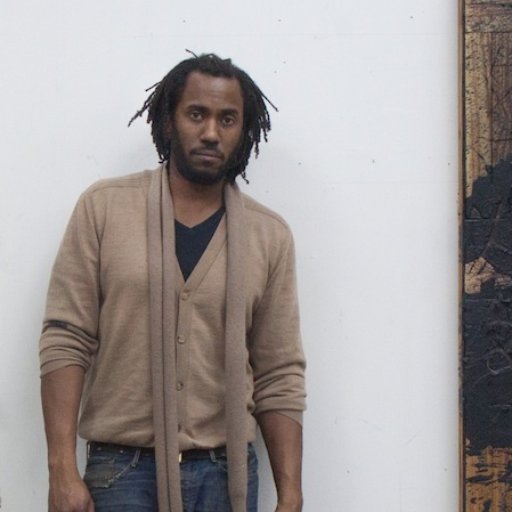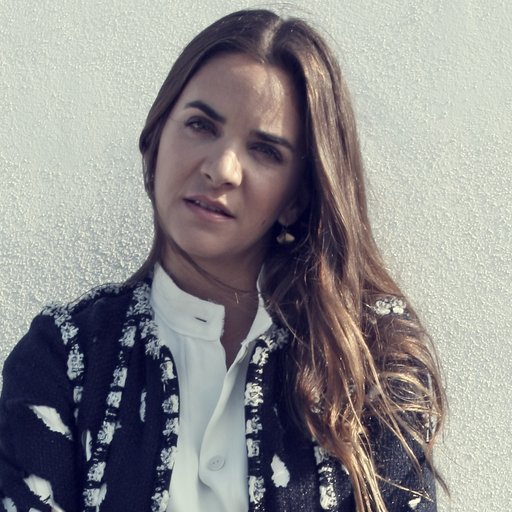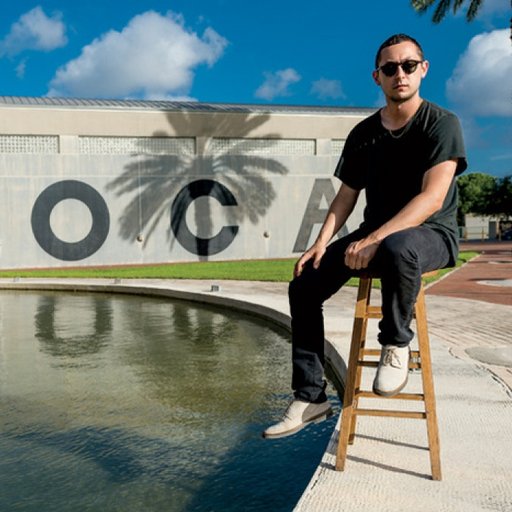The artist William J. O'Brienis, without question, having a moment. His first solo exhibition in France opened last week at Almine Rech Gallery in Paris, featuring a series of ceramics made over the last five years and a new group of works on paper. Then, later this month, his first major museum survey is opening at the MCA Chicago, in the city where he has lived for more than a decade.
While he may be best known for his idiosyncratic and exuberant glazed ceramic vessels and masks, the prolific artist has for just as long been creating brightly colored powder-coated steel sculptures, fabric collages that recall the vibrance of Matisse's late découpage pieces, and all manner of works on paper, from paintings to collage to color pencil drawings.
We spoke with him about his hometown, his influences, and what it means for an artist to find and express his own identity.
Your career has been rooted in Chicago, where you have been both student and a teacher, and where you have shown widely in galleries and museums. Does the city hold special meaning for you and your career?
It is hard for me to adequately express the gratitude and heartfelt connection I have to the art community in Chicago. When I moved here from New York City I was unsure of how contemporary art exists here. I found there's a long history of artists who have spent very meaningful time in Chicago for school and also use the city as a great place to get work done. I greatly value the opportunity to work with my students at the School of the Art Institute of Chicago. Although there aren't as many institutions as in other cities, everyone here has a close connection to the work they do, and having that intimacy is something that I value about living here.
You are known for working in a wide variety of materials—not merely dabbling or sending out to fabricators as some artists do, but really working with the specific media, from clay and glazes to pencil on paper to fabric and steel. What draws you to the different materials?
I look at my art practice as one of experimentation and improvisation. Working in different materials allows for different formal qualities of the work to come about. I am fascinated with using materials in their traditional, historical forms, but also with refuting their logic in experimental forms. Different types of materials have different natural qualities affecting how they can be manipulated. Clay inherently is more playful but also delicate, steel more rigid and unforgiving. Drawing is one of my favorite materials because it has the widest range of expression, and I like the potential for works of art to maintain both static and unfinished states in completion. That tension opens up the dialogue for interpretation for me as the maker, but also for the viewer of the work as well.
In your upcoming MCA exhibition, as in past shows, you will be displaying the products of these varied means of production together. What do you think about when creating these groupings or tableau?
In my early work I primarily did installation so for me the interplay between objects was of critical importance in the work—mostly as a critique of object-making, but also as a way to allow for the spaces in between to be the content of the work. The gallery or museum in and of itself offers a structure and dialogue about how works react to one another in the space. This dialogue is something that I enjoy but also at times become incredible challenged by. I like the idea of art existing in a casual but also serious nature. When things are shown in groupings it breaks up the seriousness and contention of art objects. Art, both in the making and viewing, is a continuum, so the mistakes or imperfections in the work and between the objects are part of the content of the work, as are the contradictions between them.
Some of your work seems to hover at the edge of referencing kitsch, while elsewhere there appears an influence of a kind of highly formal modernism. Do these concepts have special meaning for you?
I think this relates to audience and the history of certain material-based practices. I am influenced by and embrace outsider artists, funk ceramicists, but I am also greatly inspired by minimalism and the tenets of both. This idea of identity in material and process is something I am greatly fascinated by as a means to embrace, contradict, and evaluate the role that certain materials have within different contexts.
On a practical level, how do you go about your work? Do you find yourself in the course of a day moving from drawing to cutting out felt to building pots?
I work continuously in all materials simultaneously. But lately I have been focusing on series of works at a time to see a particular set of rules or constraints followed through. Experimentation and range is something that has always been an important aspect of my practice. I usually work in ceramics in the morning and do more concise controlled work like drawings later in the day. Ceramics are naturally more experimental, so I enjoy starting my day in ceramics to allow myself to not take myself so seriously. In the end, I think that making art is a push and pull between following your own natural tendencies towards expression but also setting up rules and constraints for yourself to be able to evaluate when things are done.
Does working in one material help you break through a creative block in another?
I think you need to sit with the discomfort of things not working out in the studio for long periods of time to eventually resolve and evaluate in yourself your own set of expectations and rules for the success of the work. Because in the end art is subjective and I find the work I have produced that's a failure in my eyes is usually the most interesting to the viewer. Their interpretations or sets of critical insights are often very different from my own. Oftentimes immediate insights and perspectives in making are hard to see, so in the end I try to just focus on the making of the work and then later be more curious about whether it's successful or not.
Going back to the idea of you being a very hands-on artist, can you talk about the importance of what I think I once saw you refer to as "genuinity" in your work and about the significance of authenticity more broadly in contemporary art?
The best art comes from each person genuinely being themselves, which is why there is the potential for many different ways of existing as an artist. Moreover, this search to be genuine refers to the pressures many artists feel to conform to certain current sets of constraints in their work to feel the work is relevant to what else is being created. In the end there is always a tension between any maker's desire to be genuine and to want their audience to embrace what they do and assign value or success to the work. But I do think the artists I most admire just sincerely kept to their own sense of themselves in the work despite periods of the contemporary canon embracing it or not. It is interesting to consider how long a work sits in time—to consider both its immediate gratifications, but also the value or lasting content in the work. Many times the work that lasts the longest relates to this issue of being yourself in the work.
Were you specifically drawn to some of your materials, particularly ceramics and fabric, because of their association with craft in art history?
My earliest art experiences were through ceramics. I never enjoyed art classes—I can recall crying in grade school for not being able to use the scissors correctly and for my pumpkin cut out assignment to never achieve the same quality as the example. When I left high school to be home schooled I had to take an art class for credit and ended up taking a pottery class at the community art center. My art teacher was a gregarious alcoholic who, despite maybe not teaching me anything about ceramics, allowed me a certain freedom and space to explore which I think I associate more with craft-based materials.
Because it may be a more bastardized material historically, I think it allows me to refute and be subversive compared to when I work with materials that are more expensive. So the craft-based influences in my work originally were really extensions out of practical economical constraints. Fabric from the thrift store was cheaper than canvas at the art supply store, et cetera. In the end, I like how loaded craft history is with its material usage. I find the art world likes my ceramics when they are not well crafted, but ceramicists like my work when they are better crafted. I like the idea of being misunderstood or playing around with the roles of what the maker should look like or appear.
These same materials have since the '70s been taken up by some artists because of their connection to traditional "women's work." As a gay man, do you feel some connection or corollary to this feminist stance?
I would say that there is a certain history associated with certain types of material choices within the art historical canon as it relates to identity. I still am fascinated by the idea of what queer minimalism, or identity-based minimalism could look like. Currently I think many artists are playing around with this idea of material and identity. I do not think of myself as doing women's work. Maybe I just pretend that I work as a baker.











